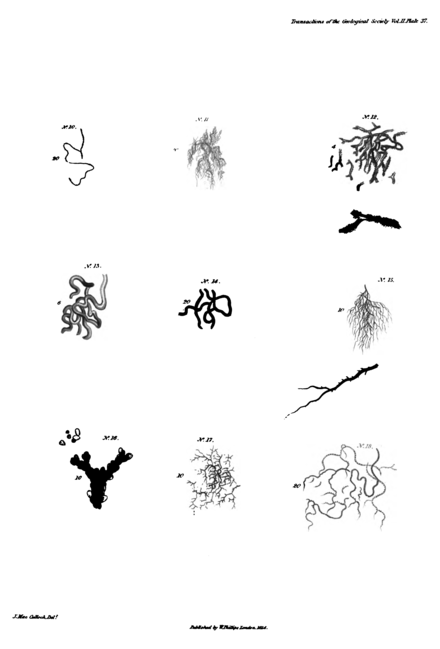that of conferva ægagropila, although its size is such as to preclude it from belonging to this species, not to notice the other important distinctions between them.
7. The seventh figure exhibits the decided character of a moss, and probably of a hypnum: I have selected two of the most entire branches, the greater number having the leaves folded and confused, as if by external force, a circumstance in itself important. Fibres, appearing to be those of a conferva, may be observed in the same stone, which is a transparent chalcedony, with the mammillated appearance that determines it to have been a stalagmite.
8. A larger specimen of a plant very like No. 6.
9. Very delicate fibres of chlorite, but much resembling the conferva tortuosa. They were ascertained to be chlorite by the chemical means already described.
10. The pale colour which surrounds the dark line in this figure, appears to arise from some metallic crust, investing a simple fibre.
11. In this figure nothing but a reticulation of minute yellow fibres can be discerned, and it is to a similar disposition of fibres that a great proportion of the red and yellow agates owe their colour. I believe that this particular description of agate has never been suspected to contain vegetable fibres, nor to owe the disposition of its colouring matter to the effect of these fibres in modifying the deposition of iron. The agates of this tribe generally exhibit a muddy uniform yellow colour; at times, though more rarely, a lively red, and are very common among lapidaries. It is only when in thin plates, and by the assistance of transmitted light, that the existence of fibres is detected in them. When subjected to the action of sulphuric acid they blacken and decompose it in the way I have before described.
12. This figure is intended to convey a notion of the mode in which oxides of iron invest the vegetable fibre.

